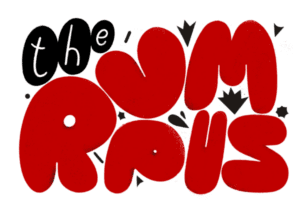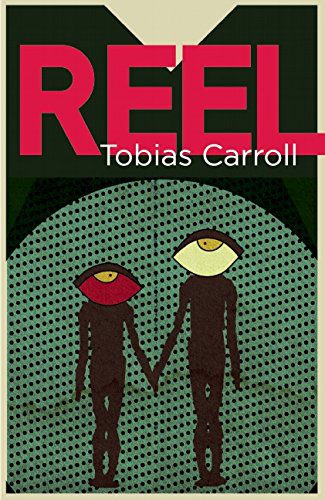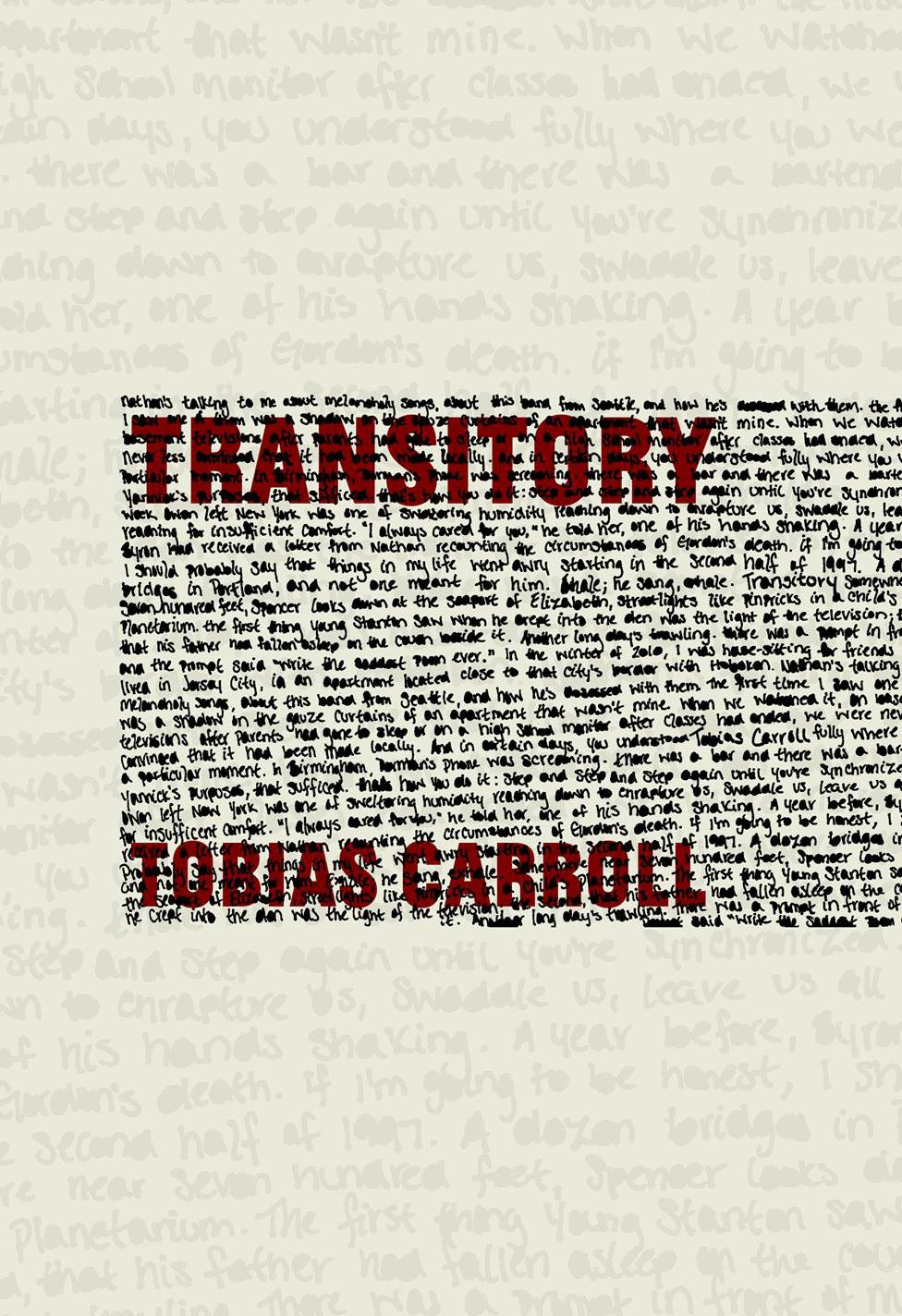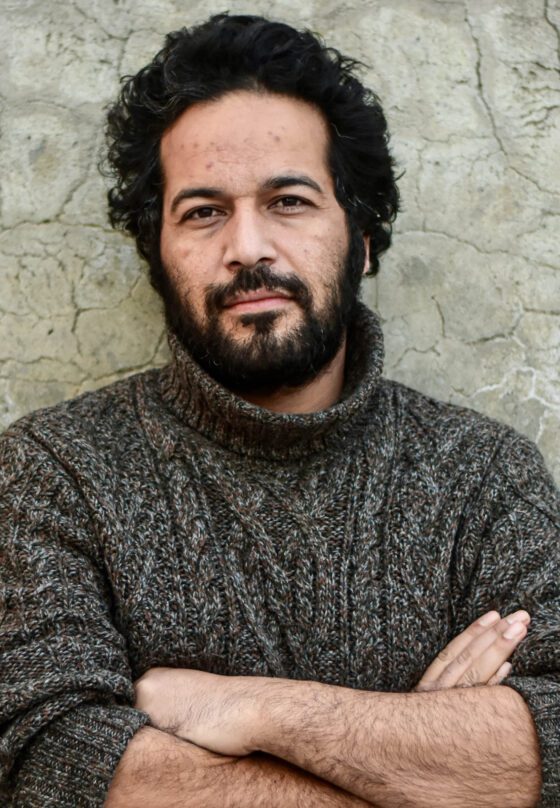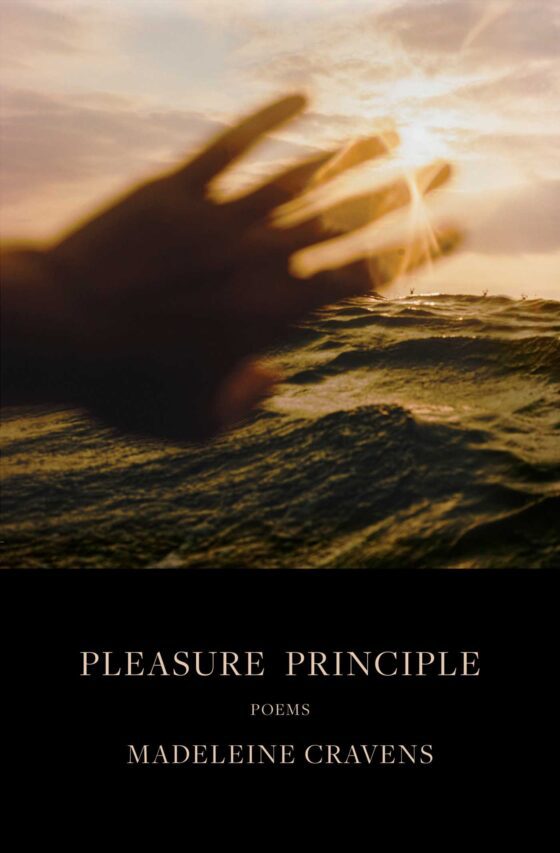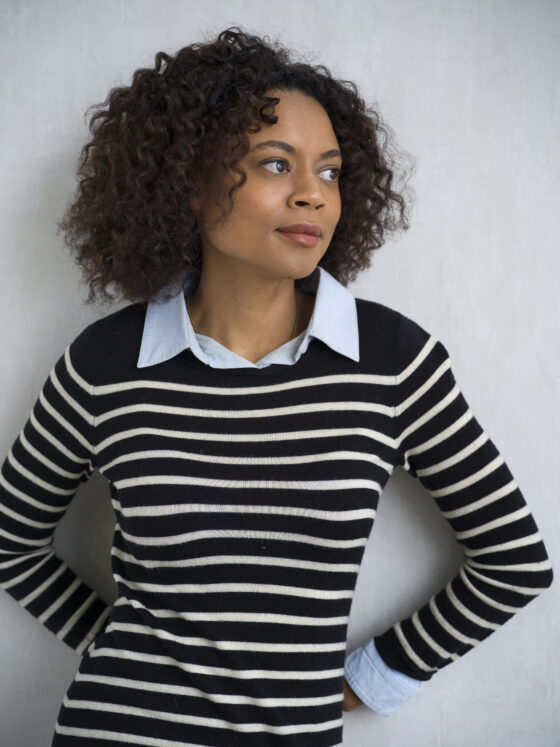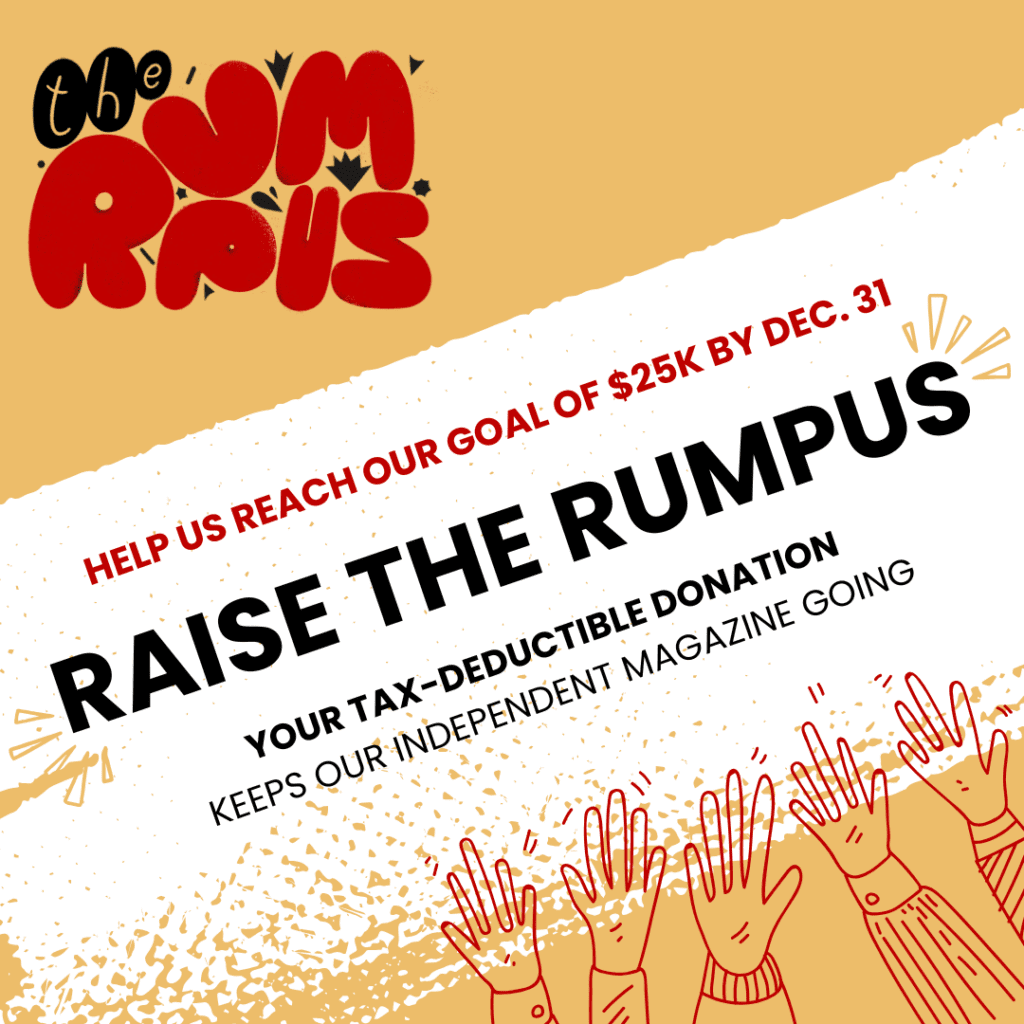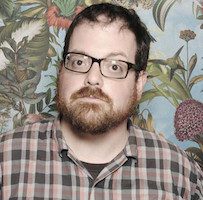
I first met Tobias Carroll years ago at BookThugNation in Williamsburg. A friend and I were traveling to work at the Bronx Museum Book Fair, and Toby helped us arrange a reading at BookThug with him and his Vol. 1 Brooklyn co-producer, Jason Diamond. Not only was Toby generously well-connected but he was deeply kind too, and best, his work is great—written in the same rhythmic tone he uses to speak. This tone, rooted in the visual world and punctuated with musical references, links everything he writes about, from clowns to coffee to short novels to soccer.
It’s corny but it’s true: I am lucky to be Toby’s friend and to work with him—he’s one of the sincerest lit-world hustlers I know, prismatically—and we’re all lucky he now has not one, not two, but THREE books, out now or immediately forthcoming. In August 2016, the short story collection Transitory was published by Civil Coping Mechanisms; the essay anthology Nobody Shops Here Anymore: Essays on the Disappearing American Mall (co-edited with Diamond) is due from Curbside Splendor next fall; and here Toby and I talked over email about his first novel, Reel, published by Rare Bird Lit in October 2016.
When not making fiction, Toby writes for places like Bookforum, Tin House, Rolling Stone, and Men’s Journal; supports authors, musicians, and events pretty much everywhere; and is the Managing Editor of Vol. 1 Brooklyn. He is good people.
***
The Rumpus: Was Reel always the title?
Tobias Carroll: Reel wasn’t always the title. I worked on different versions of the opening scene off and on for a long time, always knowing that it was the opening to a story that I wanted to tell, but unsure of exactly what form it would take. The original title that I used for it when it was in this embryonic version was Broke-Ass Words, because I thought that it had a nice ring to it, like a Grifters B-side or something. But after a while, I found myself liking it less and less as a title. Mostly, it didn’t quite fit the tone of the story I was telling. None of the characters in the novel could be described as “broke-ass,” for one thing.
Reel as a title kept accruing different layers of meaning. Initially, it was intended as a pretty literal allusion to Timon’s drunken uphill walks through Seattle, but not long after that, the cinematic reference came to mind and I thought, hey, that works, too. When I had finally found my groove with the project—which might sound cheesy, but is nonetheless the best approximation of what happened with it—I saw a reading in which the word “reel” was used to describe a dance, and that was when some aspect of the structure clicked for me, that this novel was, in its own way, a weird dance between two people, whether or not they’re aware of it. And then there’s the Halo Benders song “Virginia Reel Around the Fountain,” which also has two distinct voices literally winding around each other.
As for the names, Timon had been rattling in my head as an interesting name for a character for years; I think I first encountered it via the play Timon of Athens, which I don’t think I’ve actually read. And Marianne’s name is something of a nod to Leonard Cohen’s “So Long, Marianne,” which is… predictable, probably. For me, I liked the tension between the two names; they don’t quite fit together, which seems fitting for this story.
Rumpus: Your writing is so visual—the red streaks that make Timon sad, for example, or music described as an object. Do you do this on purpose, or does it just happen?
Carroll: I majored in film in college, and while I was fairly bad at the filmmaking side of things, it remains a fairly major part of how I think of storytelling. I have some early class projects… somewhere in my apartment, I think. But the weird thing is, I never made it very far on the film production track in school. The very quick version is that your first year was focusing entirely on using still images and audio to tell stories; second year was about film and video, albeit in very scaled-down ways. In my junior year, I was set to take a course that would have yielded a short film with synchronous sound… but the summer leading into it, I worked on the crew of an independent film being shot near my hometown, and eventually realized that I wouldn’t have enough time to prepare for the course in question. (You were supposed to come into it with a short screenplay ready to shoot.) So I dropped the course, and heard a lot of horror stories from my classmates who had taken it, and… mostly switched to taking theory and writing courses within the film department to complete my degree. My first exposure to the writings of Virginia Woolf came via a course in the film department.
In retrospect, I feel like being able to appreciate prose as prose and film as film is probably when my fiction got good. The oldest story in my collection Transitory is called “Spencer Hangs Over Newark.” It wasn’t the first story I ever had published, but it’s close—I did a bit of writing for a friend’s small press’s website, that featured one fairly autobiographical story; then, I wrote a lot of stories that never got accepted anywhere and a story cycle that is, basically, Drawer Book One. And then there’s “Spencer Hangs Over Newark,” the first half of which is literally just a guy sitting on a plane thinking about things. And I think, in some ways, that was the challenge: to come up with something that couldn’t be easily turned on its head and turned into a screenplay.
All of that is a very roundabout way of saying: yes, I definitely write visually. I think some of that is also because it’s what I know. I don’t necessarily have a lot of formal musical training, say, so if I’m describing music, it’s likely to be either through the use of imagery or a sense of how it literally feels.
Rumpus: The structure of Reel is so tightly braided—did you map out individual scenes at all? I notice too how many conversations happen between two people facing one thing: each other in a mosh pit, for example, or more frequently a stage, the open road.
Carroll: I didn’t map it out. At all. Which is a little nerve-wracking to look back on, to be honest.
I alluded to Drawer Book One. Drawer Book Two is this novel called The Freestanding that I worked on for a few years after I’d started getting stories published. It was my first attempt at something novel-length, and I had all sorts of ideas and themes that I knew that I wanted to work into it. I came up with a pretty detailed outline and figured out exactly where I wanted my protagonist to go and every step he needed to make along the way.
And by the end of the book, I realized that the massive hand of Plot was way, way, way too present throughout. There are things about it that I really like—I keep thinking about taking the first third and turning it into a novella, for instance. And there are aspects of writing it that I really miss: sitting around with two Phosphorescent albums and one Castanets album on repeat, trying my hardest to tap into this hallucinatory sense of despair that the protagonist was feeling. But the book itself didn’t work. I couldn’t find a taker for it, and I knew that I wasn’t a good enough writer to fix what was wrong with it.
When things began clicking with Reel and it became apparent that this was going to be longer than a short story, I really didn’t want to make the same mistakes I’d made with The Freestanding. I had seen a reference somewhere—I think it was in an interview with or essay by Zadie Smith, maybe?—to Javier Marias’s approach to plotting, where he lets his first draft dictate certain things in terms of characters’ relationships, actions, etc. That seemed like a good way to go with this one.
Sometimes actions in the novel would be dictated by random things I’d see: the camping trip in the novel ended up there mostly because a whole bunch of friends of mine posted photos from assorted camping trips on Facebook one week when I was writing it. But there were a few things that I knew that I wanted: the fact that Timon takes a long trip on a train, especially.
I will say that the novel I’m working on revising now has an approach somewhere between the two: I have a lot of notes and histories and a sense of where I want things to go, but I also left more room for the unexpected. I still don’t know if that’ll work out better or not–there are some structural things in there may not work at all—but so far, it seems pretty good.
Rumpus: You’re a full-time freelancer. How did you carve time to write this manuscript, in both your work life and your head?
Carroll: Reel was written before I started freelancing full-time, and a lot of it was written in bursts. The bulk of the first part was written during a trip to Seattle, Portland, and Eugene; I was staying with my friend Molly, who was living in Oregon at the time, and would go to a coffee shop in Eugene and drink coffee and write until, essentially, I had drunk too much coffee to manage my thoughts properly.
Rumpus: As someone from Jersey, what about the Pacific Northwest drew you as a stage? Are you a mosh pit person yourself?
Carroll: I have never been one for moshing, especially after I stopped wearing contacts and switched back to glasses in the late 1990s.
As for Seattle: there was a long period in the late ’90s and early ’00s where I thought I’d end up living there. I figured maybe I’d do it after college, and that didn’t happen. And then I thought I’d move there in my mid-twenties, and that didn’t happen. My friend Scott started a small record label that I ended up working on as well, called Your Best Guess, and we ended up doing a lot of records from bands in the Pacific Northwest: one album from the Vancouver post-punk band Radio Berlin, an album from Seattle’s Lightheavyweight, and an EP from Rocky Votolato called A Brief History, which Second Nature subsequently re-pressed after Your Best Guess called it a day. I first visited Seattle in 2000, and I’ve been back once a year for almost every year from 2004 onwards.
It’s not formally stated in the novel, but in my mind Reel is set in 2002 or 2003. I think there’s definitely some desire in my brain to evoke the city as it was not long after the first time I encountered it. And I ended up setting a constraint for myself where I could only use two-word band names in the book. I might have been stretching it a bit to put 764-HERO in there, but hey.
The one thing that did bum me out was that since I’d established this constraint, I couldn’t make a reference to Rocky Votolato in there, and—unless I spelled their name as “Wax Wing”—I couldn’t allude to Waxwing either. (Plus, I suspect that some readers might think that that was a nod to Pale Fire instead of to excellent Seattle rock bands. I mean, Nabokov’s cool and all, but I never got lost in Redmond for an hour on my way to see him at the Old Firehouse.) Hence why there’s a reference to Kentucky Pistol in there, a group in which he played drums that released one song on a split seven inch with Sharks Keep Moving.
It’s funny: the novel I’ve been working on since then is largely set in my home state of New Jersey. So I wonder if I also needed to write about somewhere that I hadn’t lived in order to delve back into an area where I was more familiar. (Though I recently did the math, and I’m pretty sure I’ve been in New York full-time for as long as I lived in New Jersey full-time, which is a very weird thing to realize.)
Rumpus: Is there a shadow-bibliography for Reel, and your writing right now too? I mean books, but also films or times of day or colors or whatever.
Carroll: I’m a big fan of autumn, which is probably not a surprise. I think there are some films that have gotten really under my skin–Krzysztof Kieslowski’s Three Colors: Red most of all, I think. The fact that, on one level, it’s an entirely realistic piece focusing around three characters living in the present day, and yet two of them are essentially the same character at different ages–well, that was a lot to get my head around. But it was also, in retrospect, a film that showed me that you could have both realistic and stylized elements in the same story and let them coexist. Robert Altman’s adaptation of The Long Goodbye is another big one. Scorsese’s adaptation of The Age of Innocence, which I took absolutely the wrong lessons from when I saw it as a teenager, but which also sparked a bunch of ideas that I seem compelled to focus on in my writing. And Arnaud Desplechin’s Kings and Queen, which goes to some incredibly uncomfortable emotional places but also works, I would say, brilliantly.
I’d also like to volley out a huge hat-tip to the art made by my friend Jeremy Olson. We’ve been friends for a while, and think his art has had a massive effect on me and, in turn, on a lot of the fiction I’ve written over the years.
Rumpus: This isn’t really a question, but: Toby, you do so much for small presses—you READ so much!—and it’s so rad that you suddenly have THREE books out in the world. Have there been any surprises?
Carroll: The news of each book keeps on breaking at moments when I’m completely indisposed to actually get the word out about them. The announcement that Transitory had been selected by Civil Coping Mechanisms came when I had just finished recording an episode of The Catapult podcast; it was the middle of the winter, and as I walked outside, I was torn between wanting to let friends and family know and the desire to preserve my fingers. The news of Reel‘s publication happened while I was waiting for a flight at O’Hare Airport and trying to charge my phone. And the news of the anthology Jason and I are editing for Curbside Splendor happened as I was walking through New York Comic Con to interview an author for a freelance assignment. All of which is a good thing, I think—a reminder that there’s time for everything.
***
Author photograph © Jason Rice.
